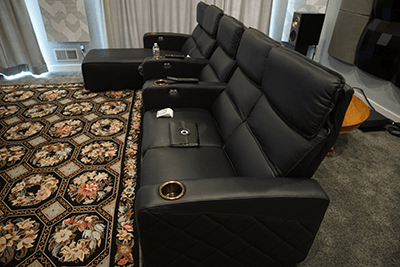
28 Dec Home Cinema Entertainment Urban Legends
As proprietor of an audio/video retailer in New Jersey, I hear lots of discussions about home cinema entertainment. And a lot of what I hear is wrong. Here are five of these “urban legends” that need a reality check:
1 – You need a large room to have a really impressive home cinema entertainment.
Bigger isn’t always better. The home cinema room’s shape is more important than size – a rectangular room is better than a square. And location is also important to enjoying your home cinema entertainment. A small room near the main living area beats a perfect room at the end of a basement.
2 – The bigger the screen, the better.
The screen should be sized proportionately to the viewing distance from the main seating area. Consider the size of the wall, too – the screen should not dominate a wall space. Balance is imperative.
3 – Front projection systems are not as bright or vivid as plasma or LCD displays.
Current generation front projection systems compare favorably with plasma and LCD screens. Moreover, many projectors today are much smaller than units of the past, so they can be discreetly hidden. But keep in mind that projection systems work best in dark rooms, whereas LCD and plasma screens are better in rooms with windows and open doorways.
4 – Home cinema entertainment equipment and audio video equipment detracts from the aesthetics of the room.
Digital audio video equipment can be totally hidden from view, or can be custom finished to match a room’s décor, becoming design elements in their own right. Components can be installed in a basement, closet, or inside custom cabinets, and controlled with a single hand held remote. Speakers can be flush mounted in walls and ceilings. Projectors and projections screens can be hidden when not in use, and deployed by motorized controls. Plasma displays and LCD TVs can hide behind decorative two-way mirrors.
5 – Home cinema entertainment is complicated and difficult to operate.
A single custom programmed universal home remote control is the only controller needed for even the most complex home cinema. An A/V technician or installer can create macro commands that allow you to operate the system with just a few pushes of the buttons.
Get over these myths, and you’re on your way to enjoying the reality of a home cinema entertainment system.


